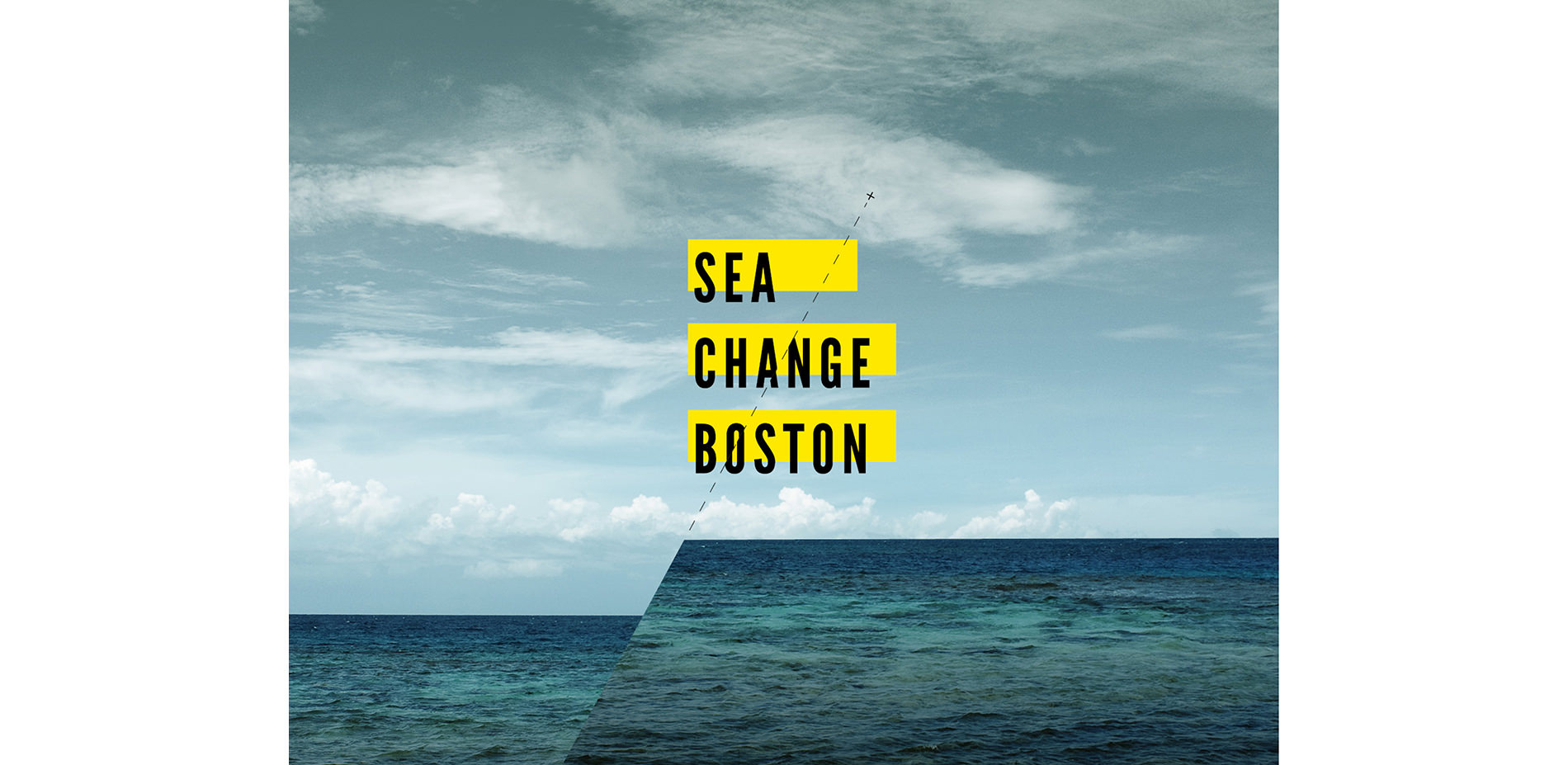
Photo Credit: Courtesy of Sasaki Associates
Media: Please submit high-resolution image requests to images@asla.org.
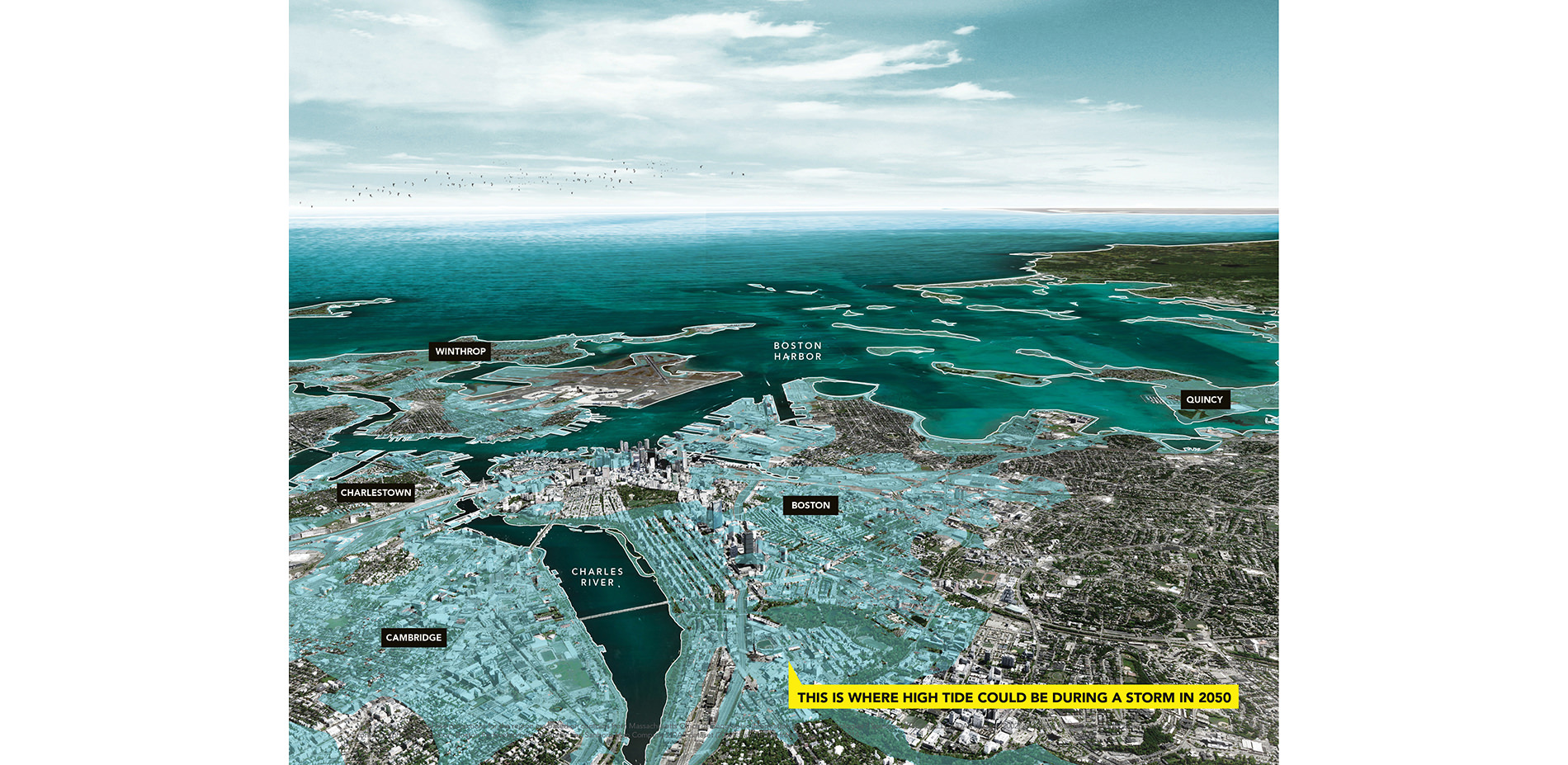
Sea Change: Boston is a research initiative on sea level rise advocating for long-term coastal resiliency in the Greater Boston area.
Photo Credit: Courtesy of Sasaki Associates
Media: Please submit high-resolution image requests to images@asla.org.
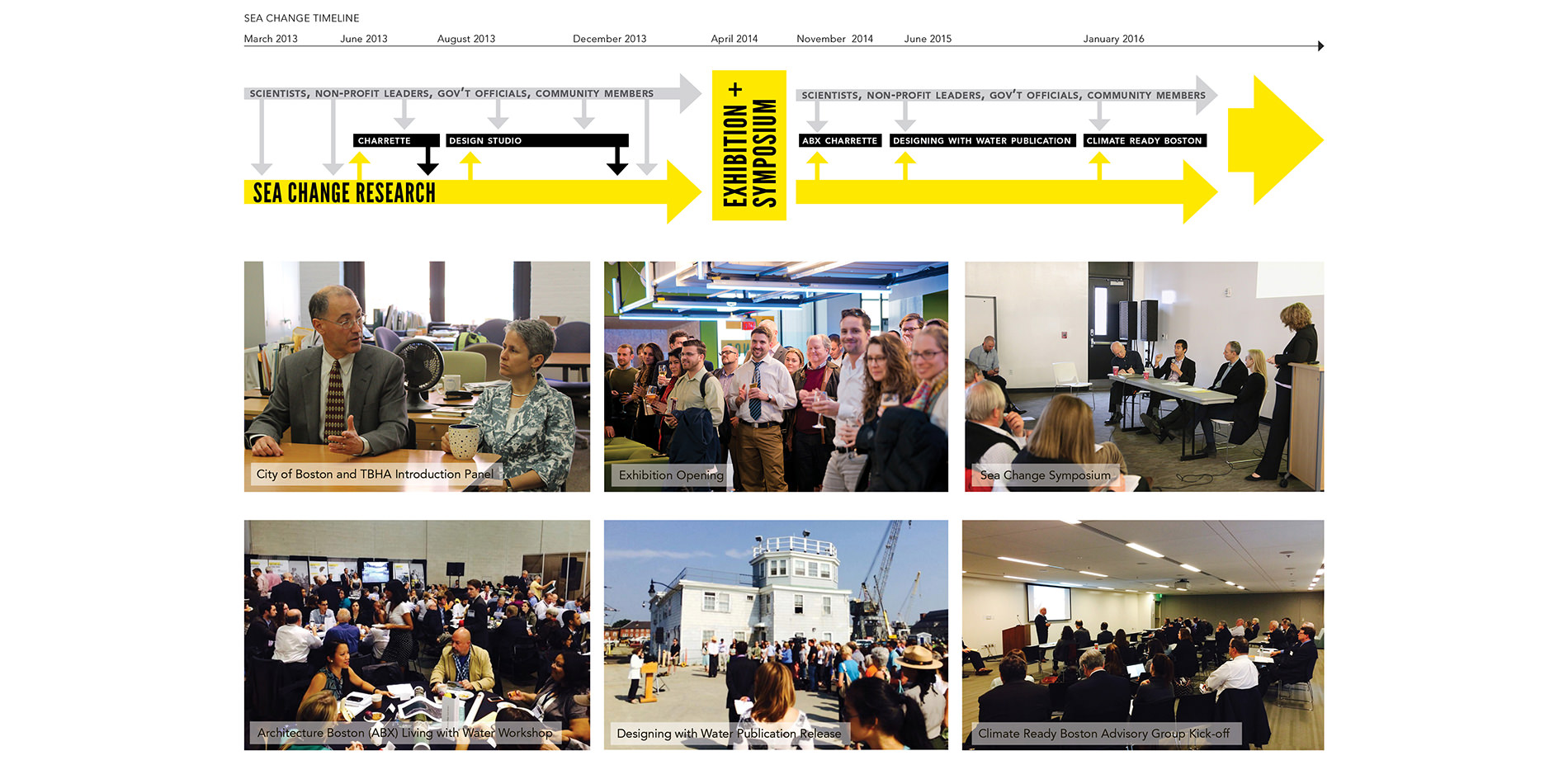
Sea Change became a call to action and a platform for partnerships between allied organizations. Outcomes included leadership of the Architecture Boston (ABX) charrette, authorship of Designing with Water, advising for Boston Living with Water Competition and implementation of Climate Ready Boston, Boston’s climate change vulnerability assessment.
Photo Credit: Courtesy of Sasaki Associates
Media: Please submit high-resolution image requests to images@asla.org.
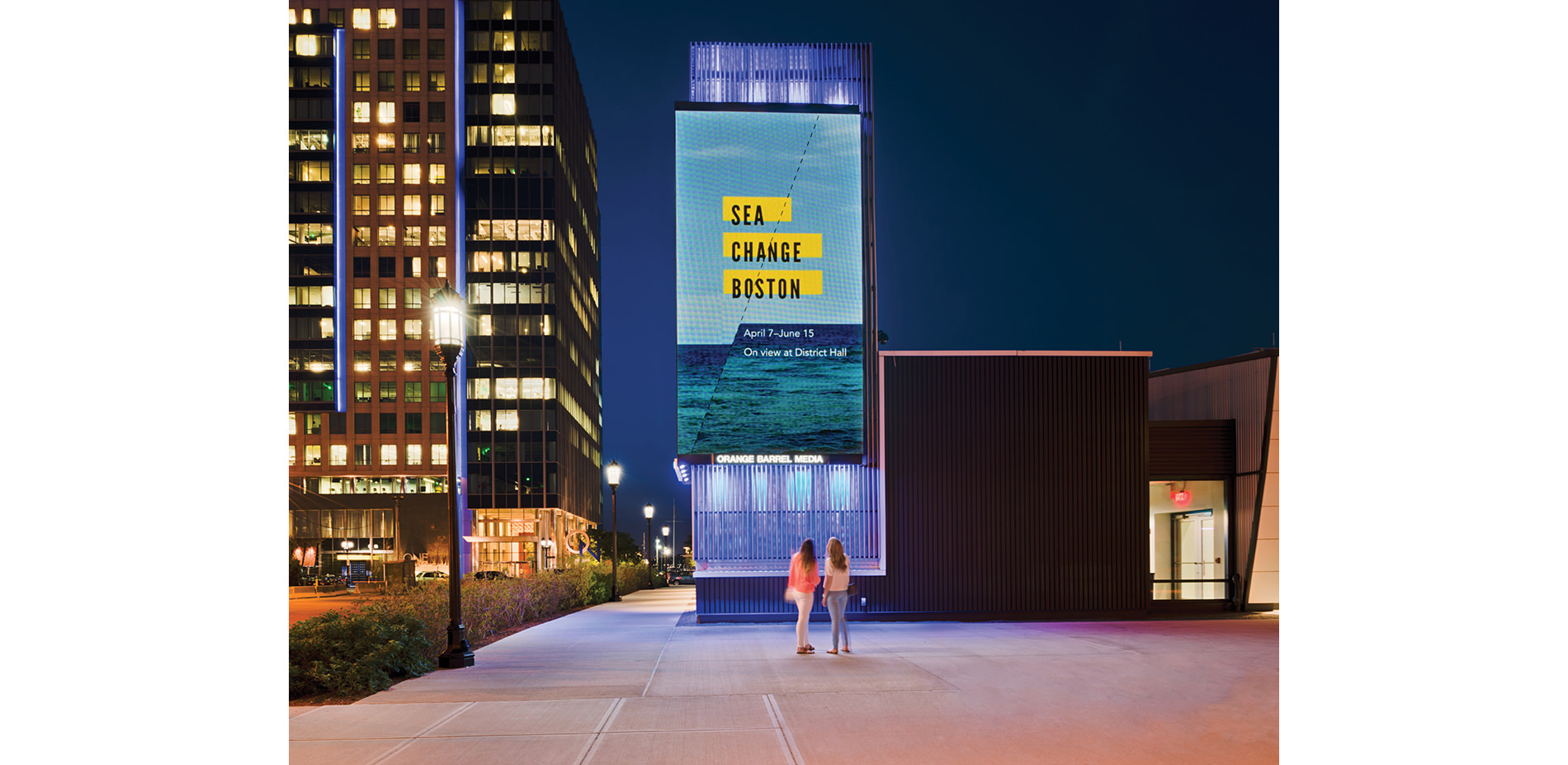
Sea Change research was curated as an exhibition at District Hall, the hub of Boston’s Innovation District. With public workspaces open 24/7 and its close proximity to Boston Harbor, District Hall was the ideal location for the exhibition.
Photo Credit: Courtesy of Sasaki Associates
Media: Please submit high-resolution image requests to images@asla.org.
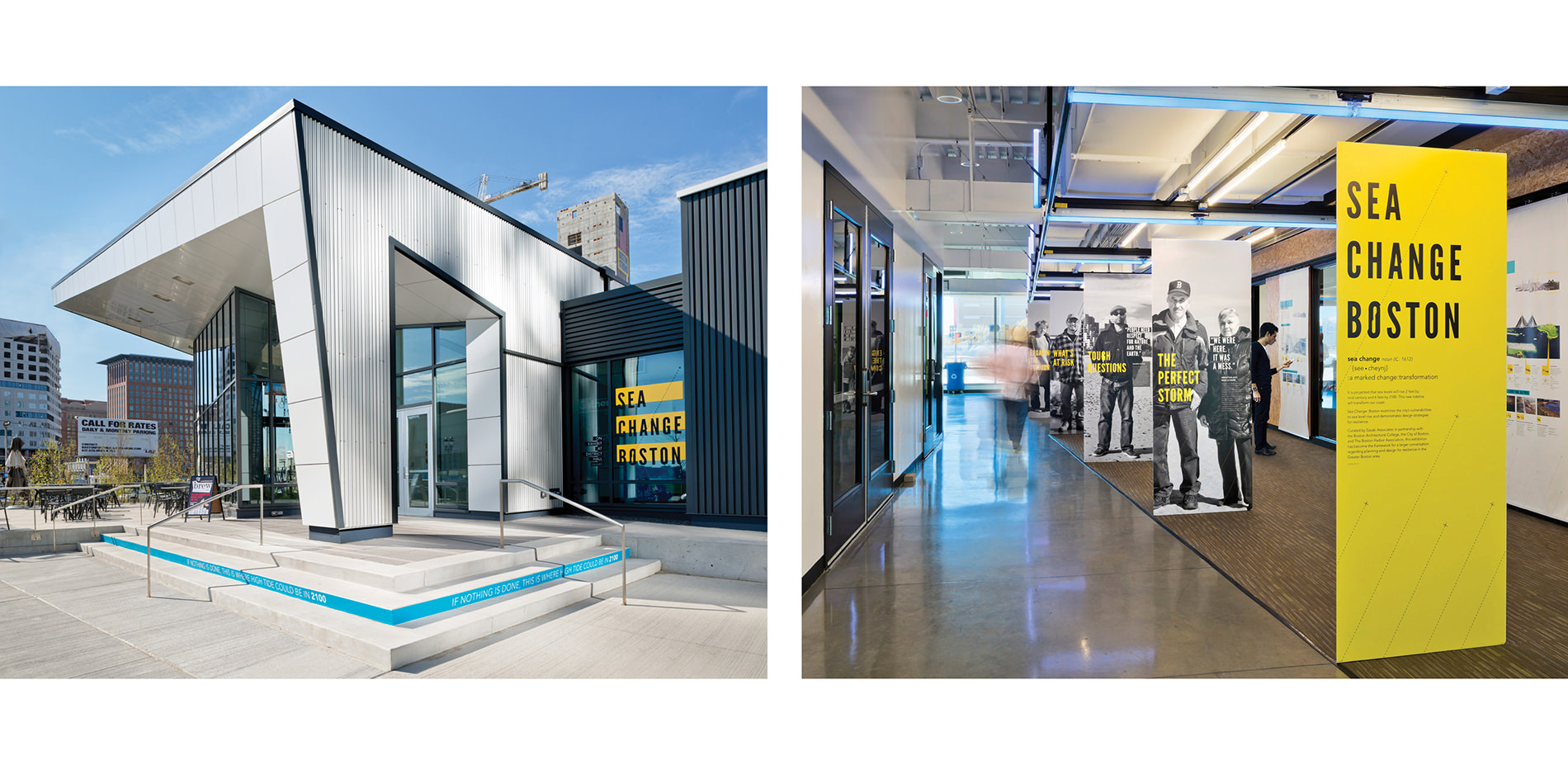
The quote, “If nothing is done, this is where high tide could be in 2100,” challenged pedestrians outside of District Hall, provoking interaction with the exhibition inside.
Photo Credit: Courtesy of Sasaki Associates
Media: Please submit high-resolution image requests to images@asla.org.
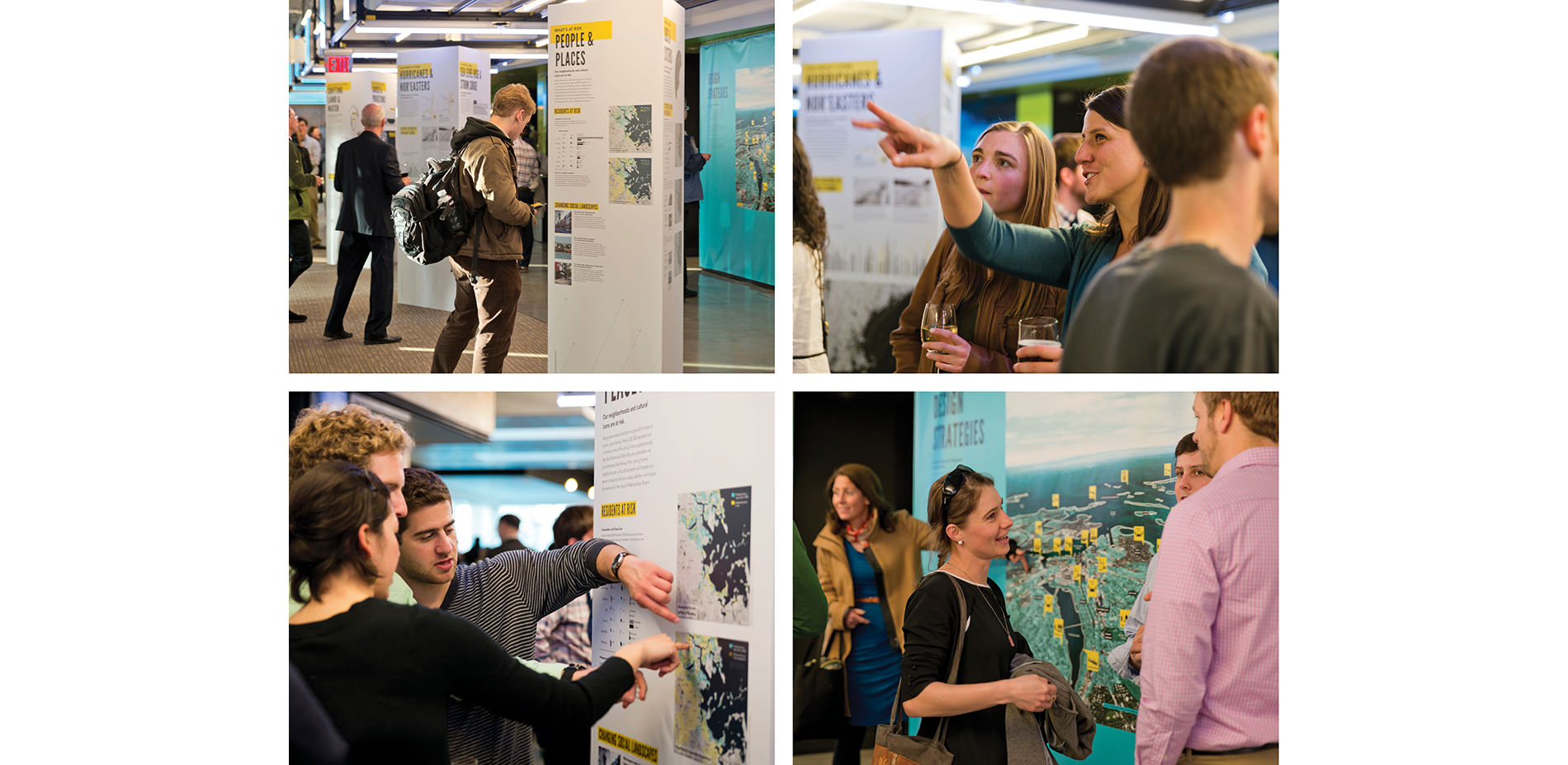
The exhibition shared the Sea Change research with the broader Boston community in an engaging and accessible format, rich with graphics, photography, and interactive media.
Photo Credit: Courtesy of Sasaki Associates
Media: Please submit high-resolution image requests to images@asla.org.
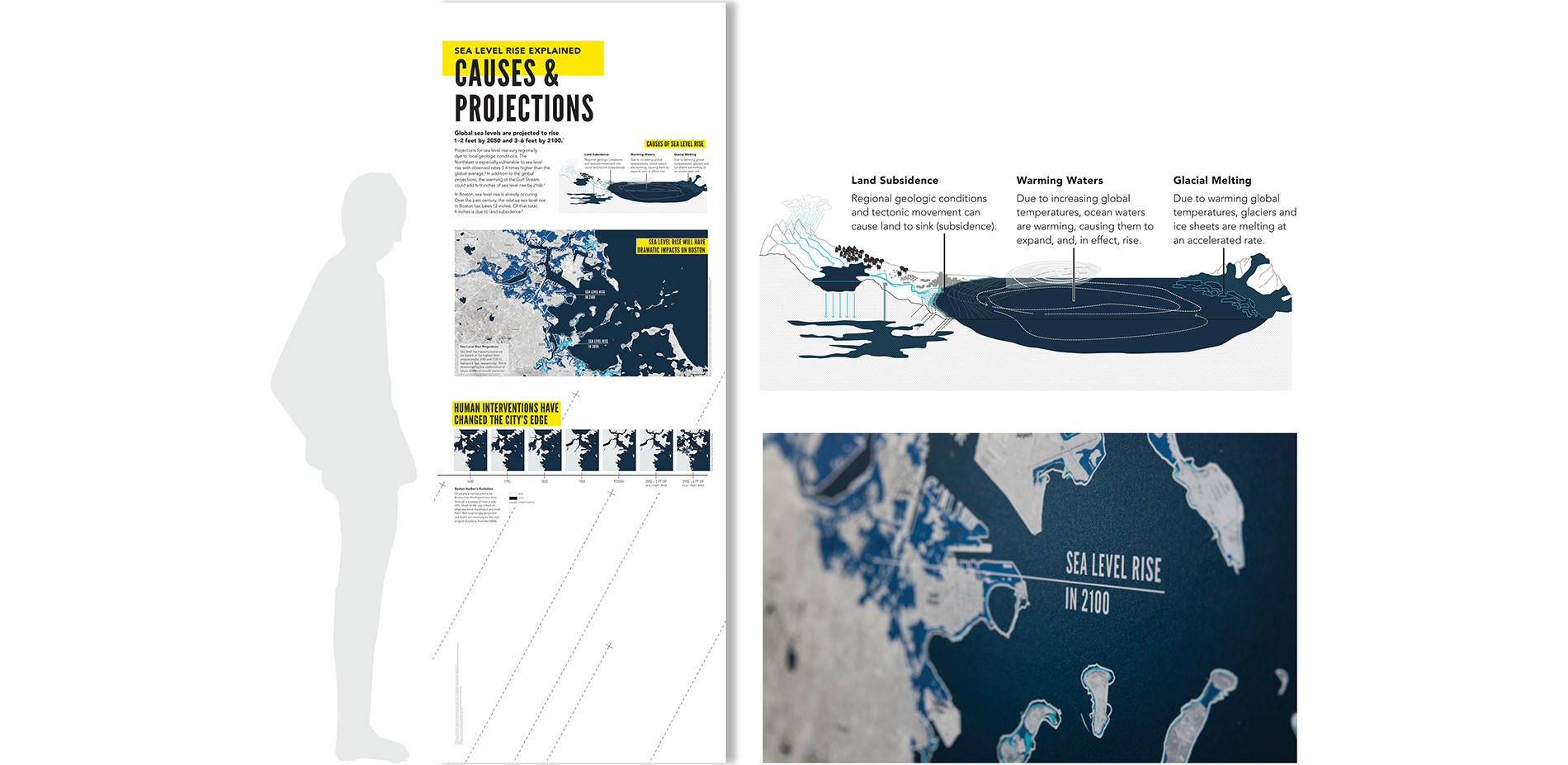
Research included the mapping and diagramming of sea level rise in Boston and its effect on land use, demographics, and transportation systems, among other vulnerable systems.
Sea Change emphasized that critical urban systems must be considered beyond municipal boundaries.
Photo Credit: Courtesy of Sasaki Associates
Media: Please submit high-resolution image requests to images@asla.org.
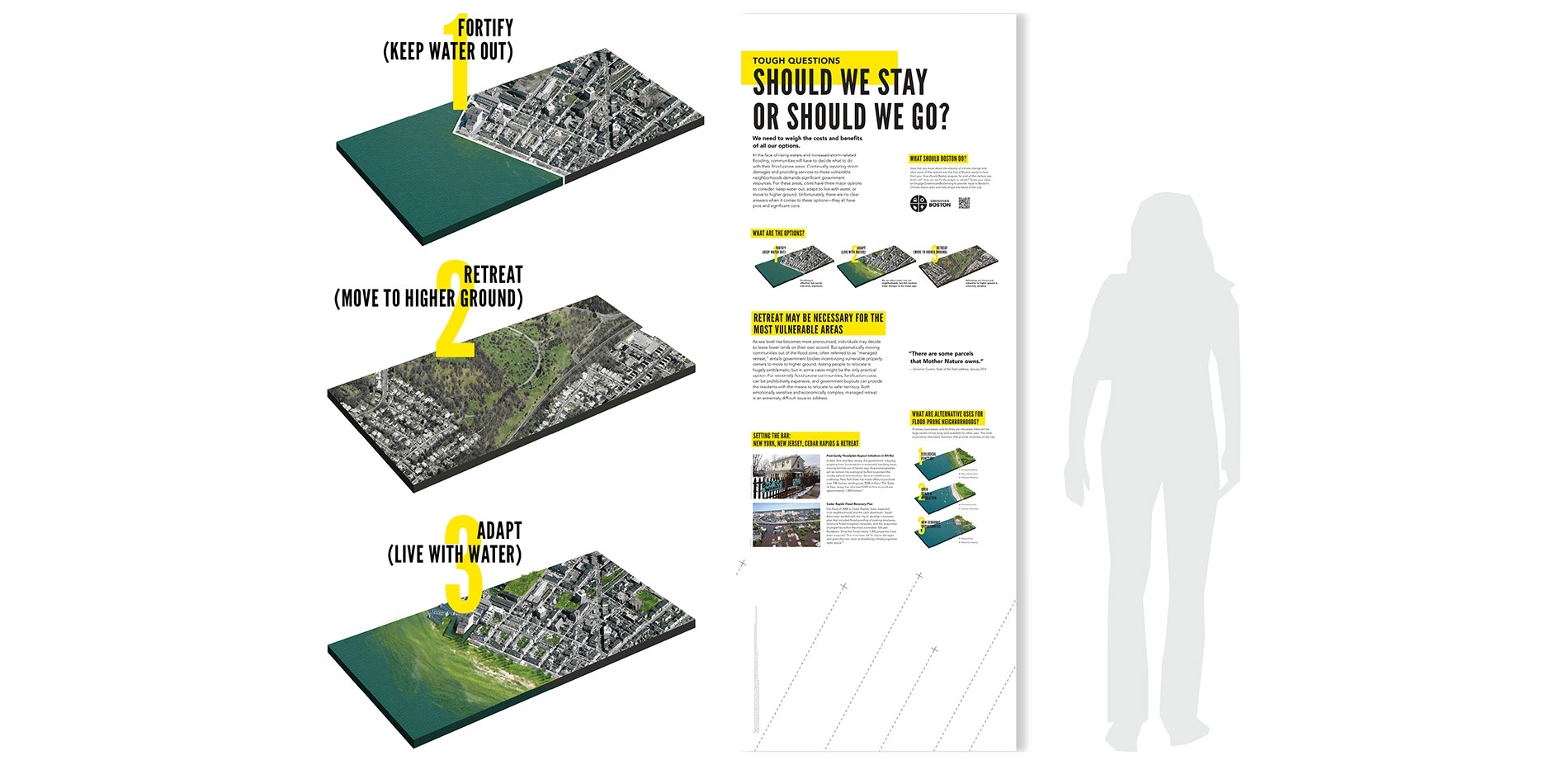
Sea Change explored how resilient design strategies can allow Boston’s buildings and infrastructure to bounce back from storms and adjust to rising tides.
Photo Credit: Courtesy of Sasaki Associates
Media: Please submit high-resolution image requests to images@asla.org.
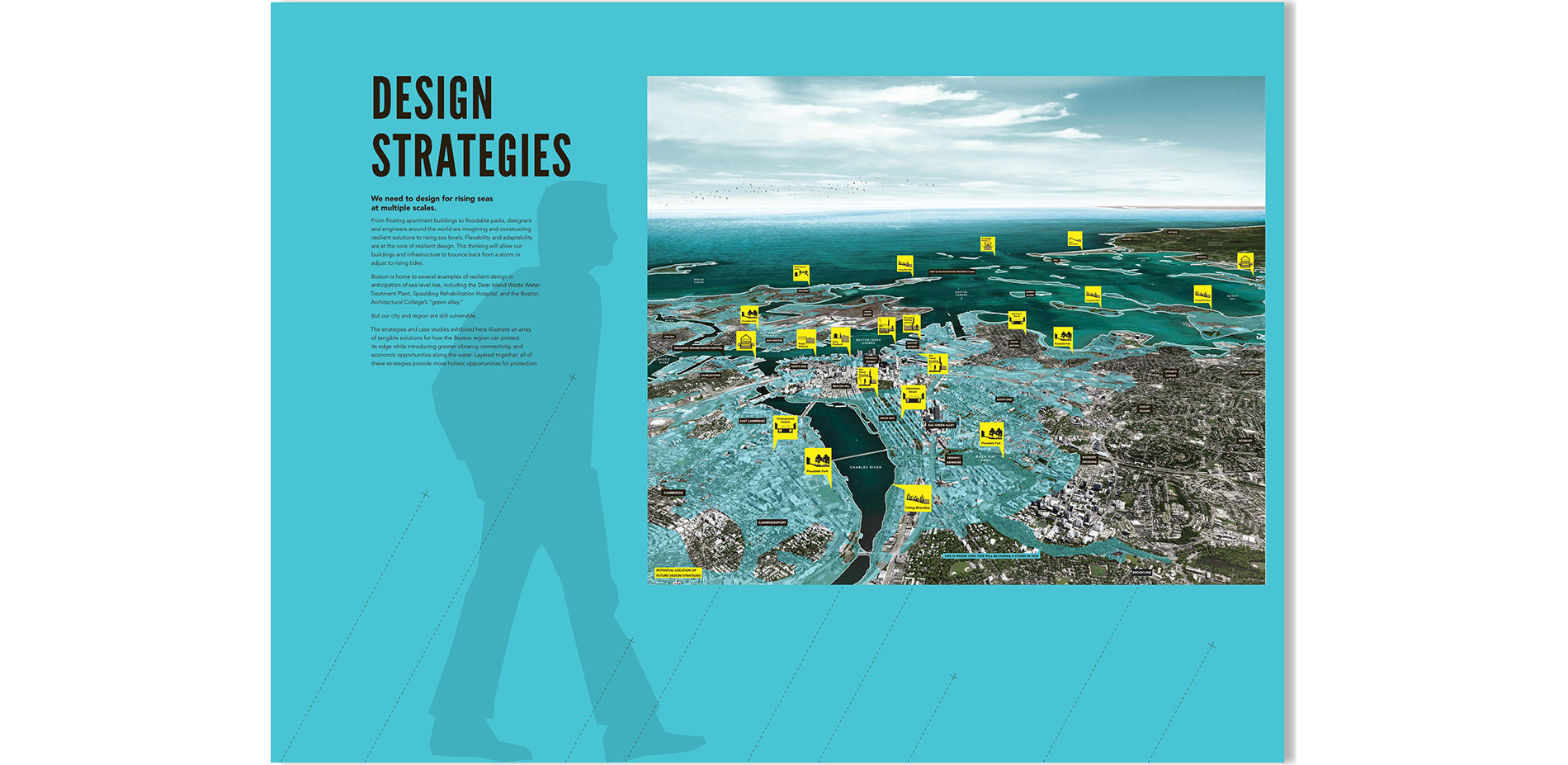
Sea Change featured proactive design and planning strategies at the building, city, and regional scales.
Photo Credit: Courtesy of Sasaki Associates
Media: Please submit high-resolution image requests to images@asla.org.
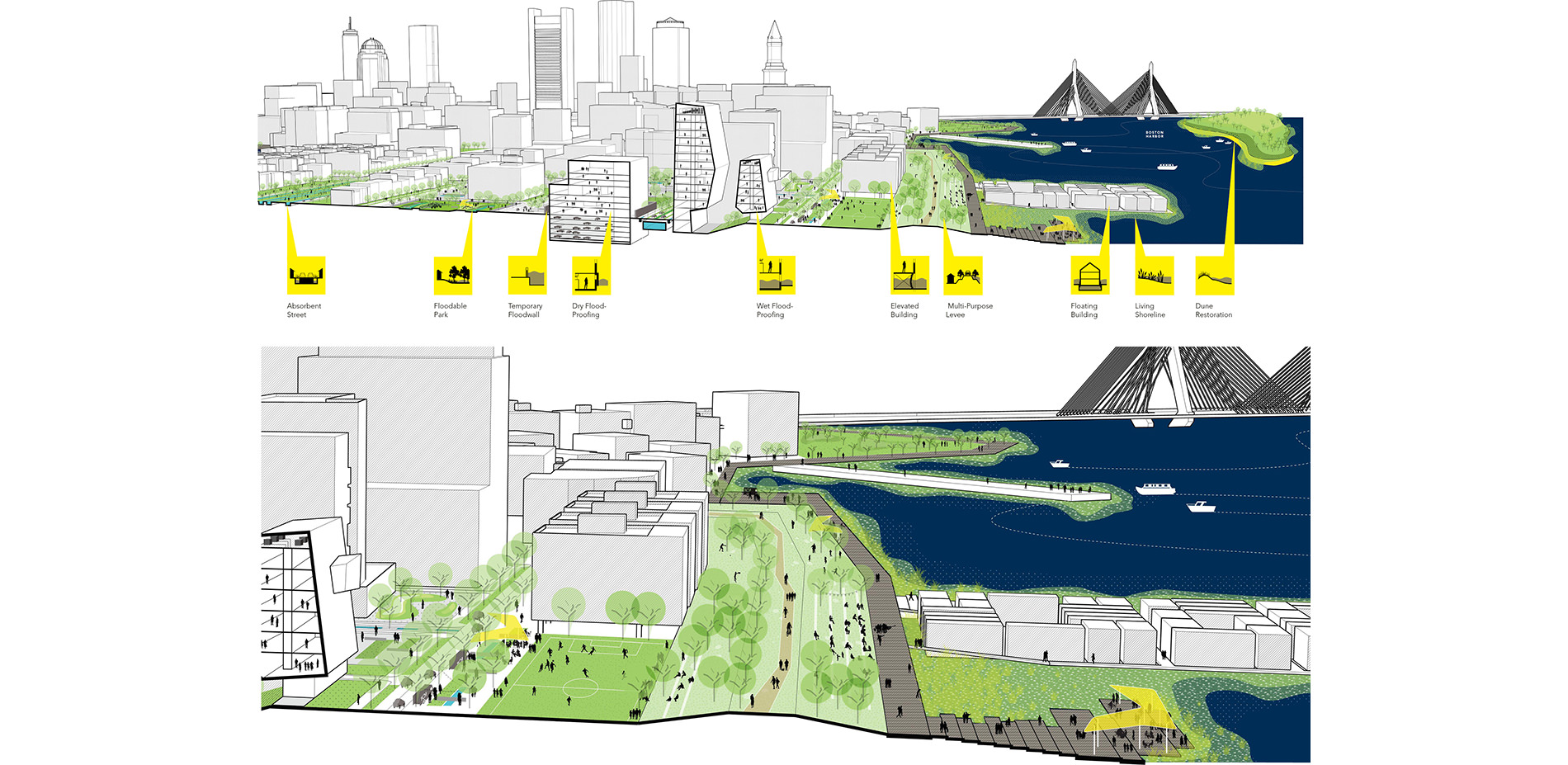
Design strategies and case studies illustrated an array of tangible solutions for how the Boston region can protect its edge while introducing greater vibrancy, connectivity, and economic opportunities along the water.
Photo Credit: Courtesy of Sasaki Associates
Media: Please submit high-resolution image requests to images@asla.org.
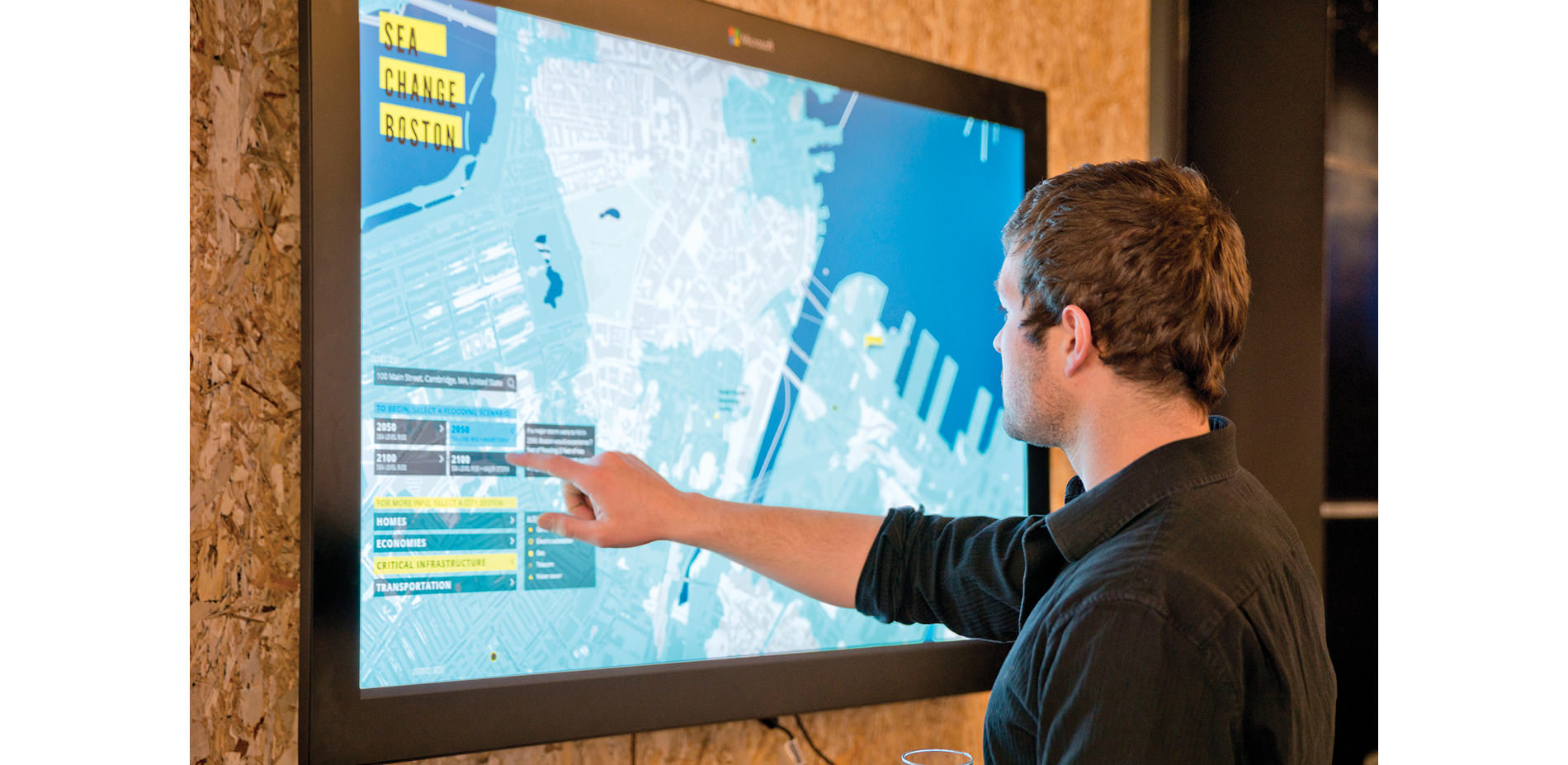
Sea Change also lives as a digital body of work. An interactive map invited Bostonians to explore flooding scenarios and vulnerable urban systems. The City of Boston used the online map for their Greenovate Campaign, which informed the Climate Action Plan.
Photo Credit: Courtesy of Sasaki Associates
Media: Please submit high-resolution image requests to images@asla.org.
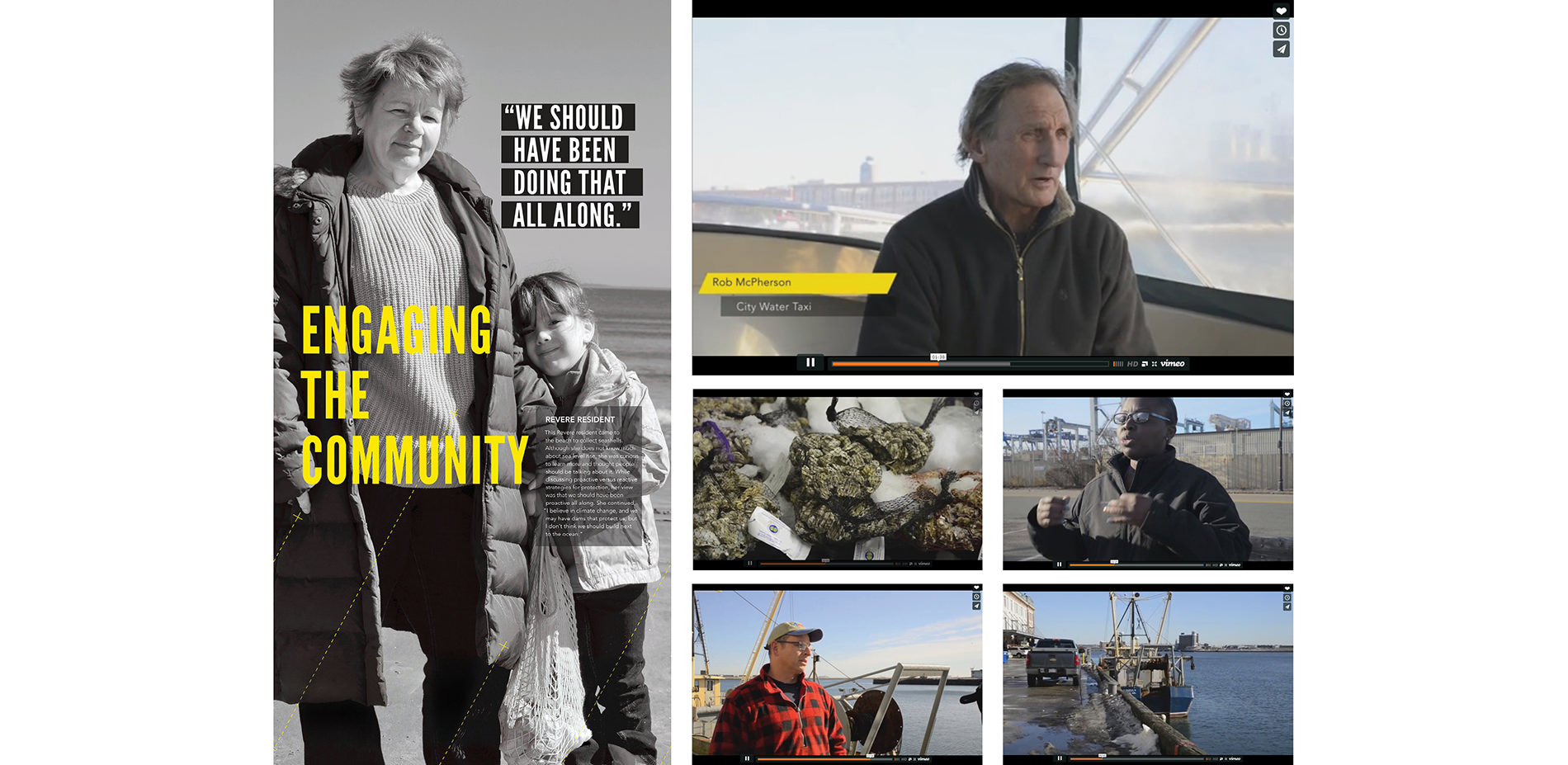
The “Engaging the Community” photo essays and online video feature interviews with local Boston residents and business owners, illuminating their concerns and awareness to sea level rise.
Photo Credit: Courtesy of Sasaki Associates
Media: Please submit high-resolution image requests to images@asla.org.
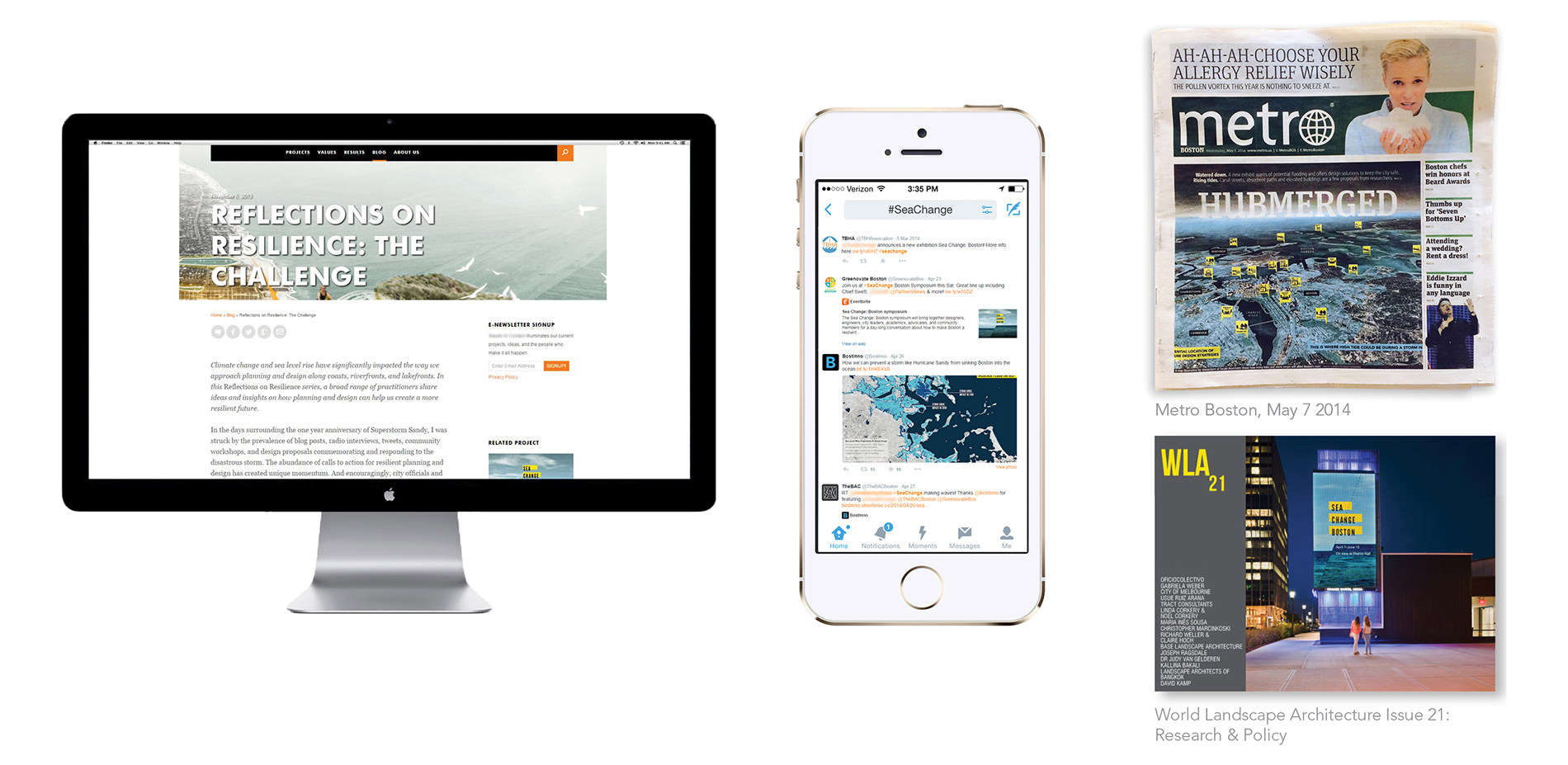
Outreach included use of online and print media. The Reflections on Resilience blog series featured voices of local practitioners while social media campaigns – #SeaChange – became digital platforms for research. Local and international media outlets also featured the work.
Photo Credit: Courtesy of Sasaki Associates
Media: Please submit high-resolution image requests to images@asla.org.
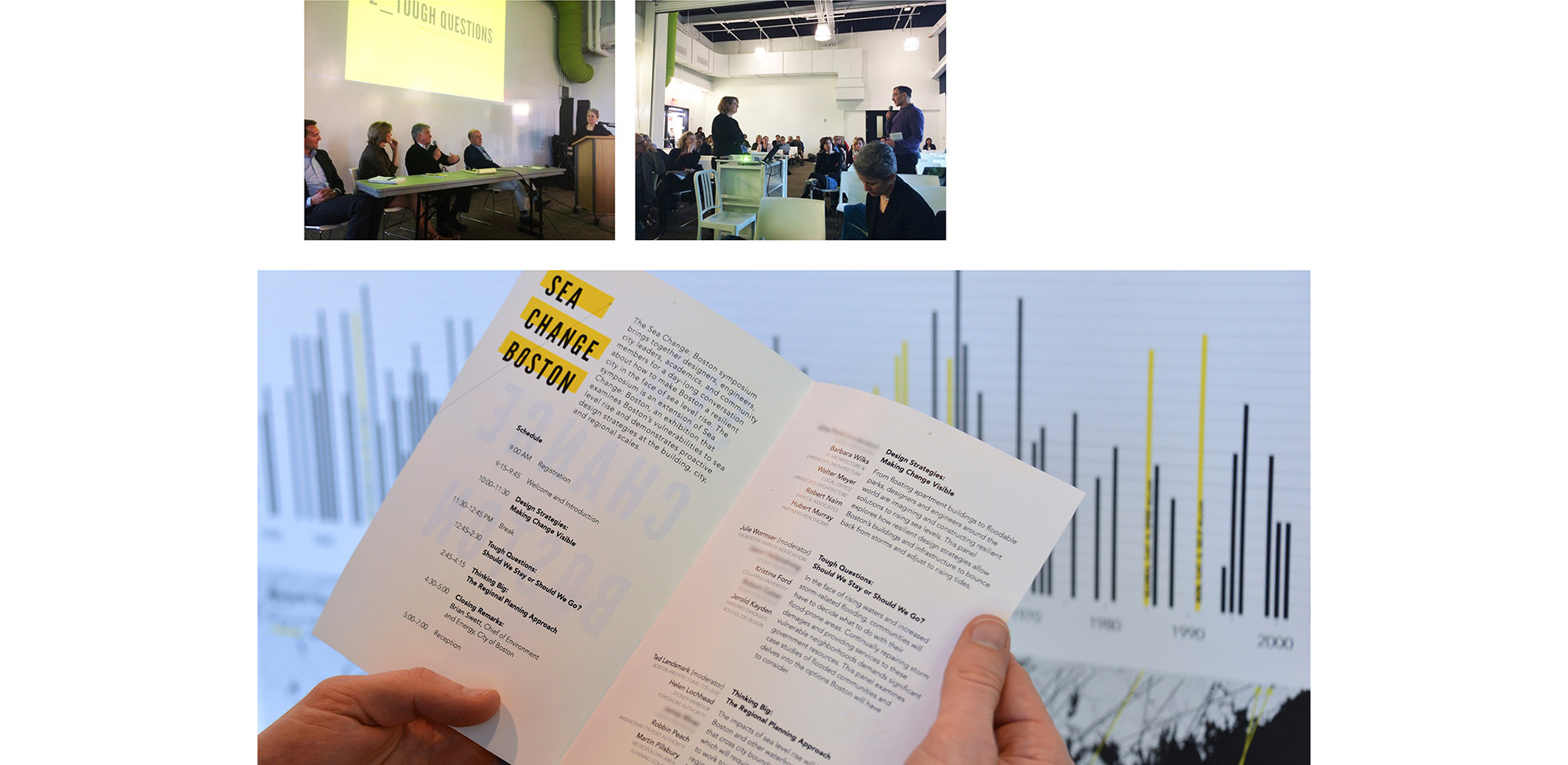
Events associated with the exhibition included the Sea Change: Boston Symposium.
The day-long conference was organized into three panels, based on themes from the Sea Change exhibition, and catalyzed a conversation among designers, city officials, real estate leaders, and academics.
Photo Credit: Courtesy of Sasaki Associates
Media: Please submit high-resolution image requests to images@asla.org.
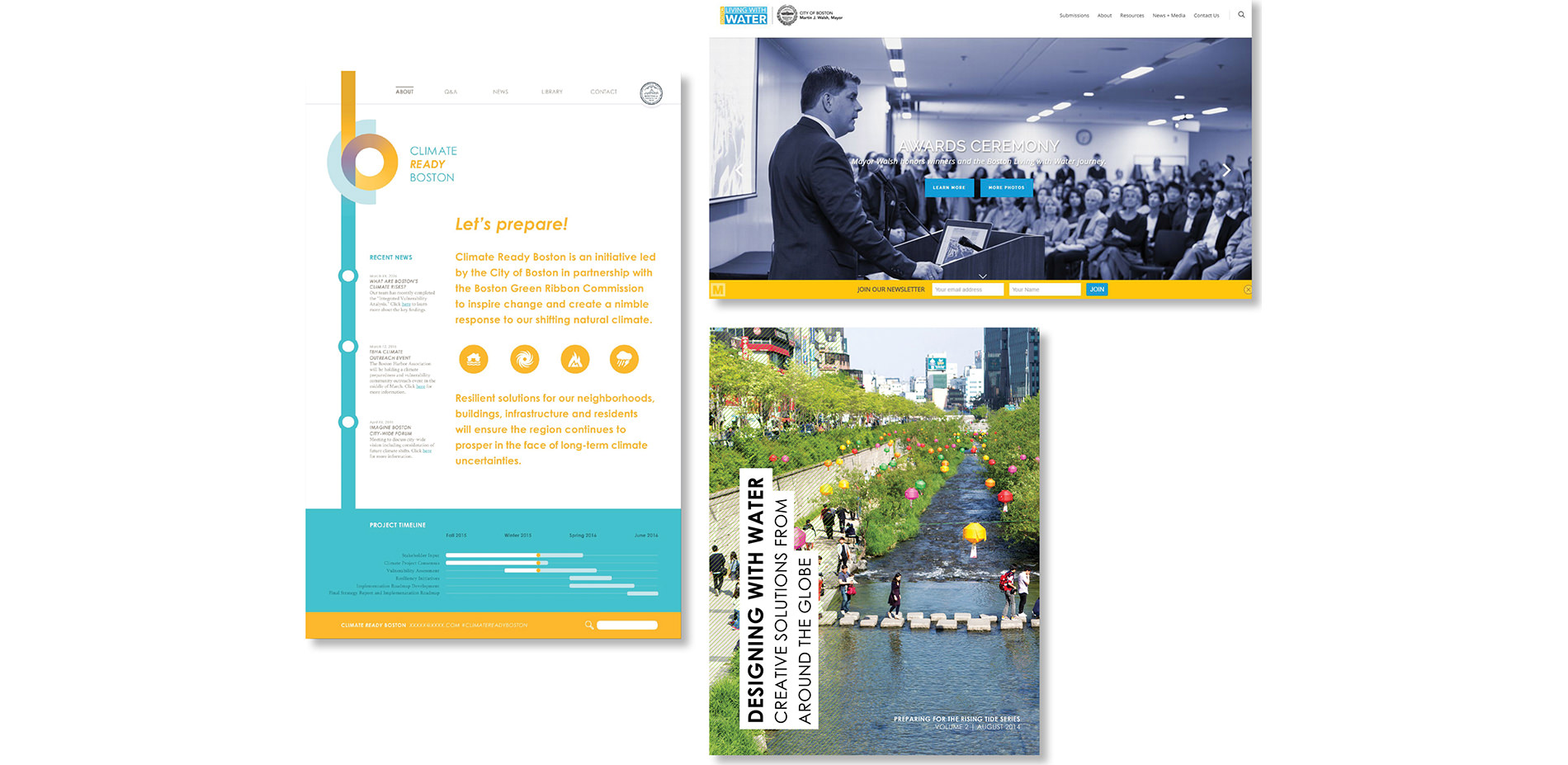
Outcomes of Sea Change have included authorship of Designing with Water with the Boston Harbor Association, advising for Boston Living with Water Competition, and implementation of Climate Ready Boston, Boston’s climate change vulnerability assessment.
Photo Credit: Courtesy of Sasaki Associates
Media: Please submit high-resolution image requests to images@asla.org.


















